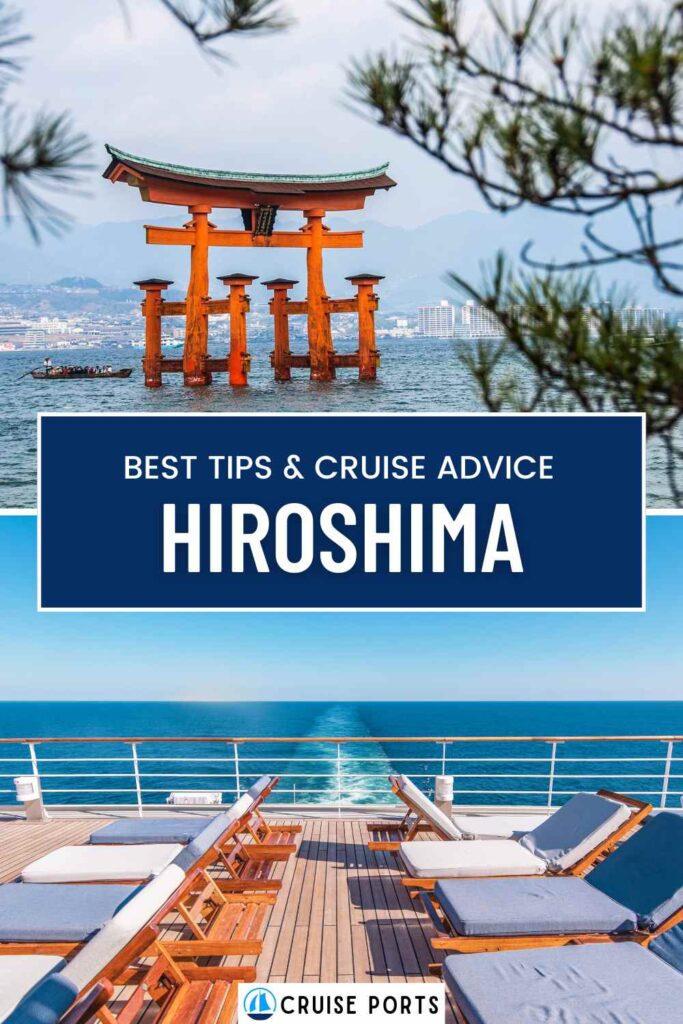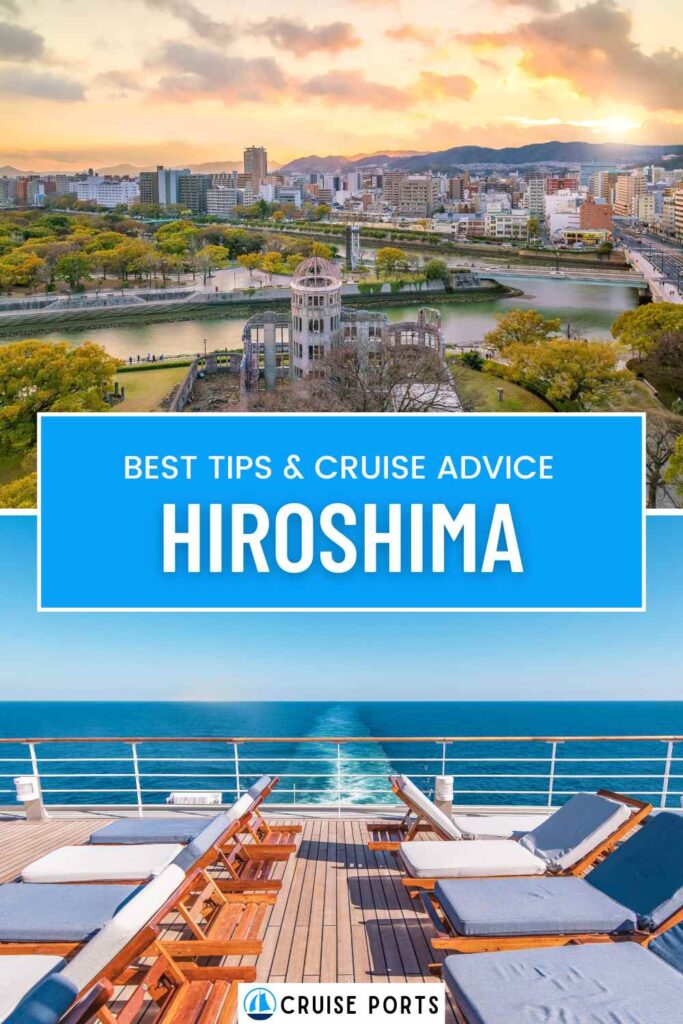Welcome to Hiroshima Cruise Port, the perfect gateway to one of Japan’s most historic regions.
The bustling energy of the city and the serene beauty of its islands offer plenty to explore.
Get ready for a memorable voyage filled with culture, cuisine, and captivating sights. Come aboard now and discover!
Hiroshima Cruise Port Overview
Hiroshima Cruise Port serves as a bustling maritime gateway to western Japan, blending efficient modern facilities with the city’s deep historical significance.
Whether you arrive on a luxury liner or a smaller cruise ship, you’ll find a friendly welcome and an array of traveler conveniences.
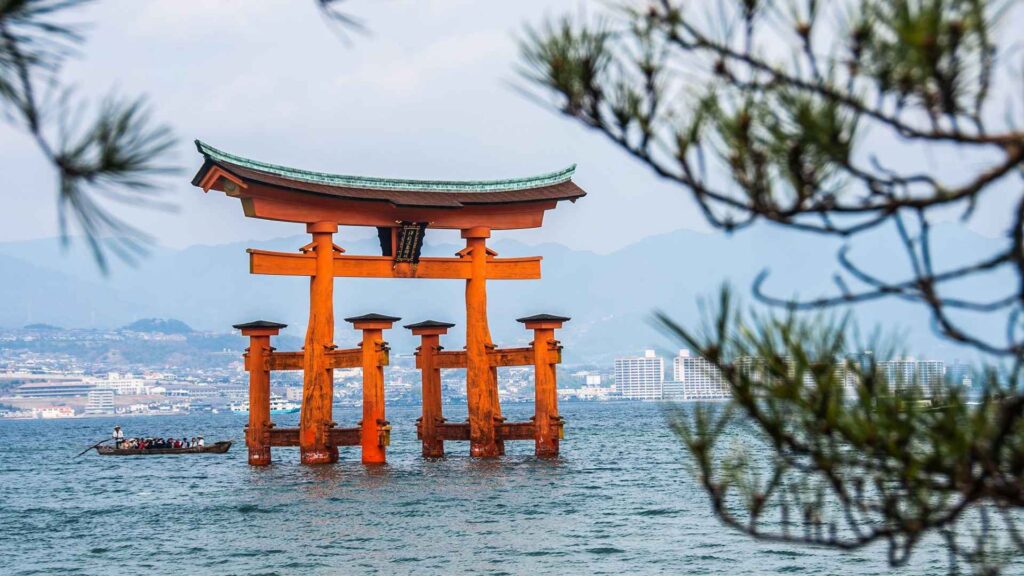
Key Features of the Port
- Modern Amenities: You can expect clean terminals, ample waiting areas, free Wi-Fi, and English-language signage that simplifies navigation.
- Smooth Customs and Immigration: Procedures are generally quick, and port staff members are known for their helpful attitude.
- Convenient Location: The port is within reasonable driving distance of Hiroshima’s top attractions, making day trips highly feasible.
Nearby Attractions
Within minutes of disembarking, you can begin immersing yourself in Hiroshima’s culture.
The city’s efficient network of streetcars and buses ensures you can reach top sites such as the Peace Memorial Park and bustling shopping areas without delay.
If you prefer a guided tour, plenty of reputable operators are available right at the port.
Traveler-Friendly Services
- Currency Exchange: Japanese yen is necessary for local shops and eateries; on-site currency exchange counters help ensure you’re always prepared.
- Luggage Storage: If you plan a short excursion or don’t want to lug suitcases, use coin lockers or the port’s storage services.
- Tourist Information Centers: Knowledgeable staff can guide you to local festivities, help arrange taxis, or recommend nearby eateries.
Why It Matters
For many visitors, Hiroshima Cruise Port is more than a transit point. It’s the front door to a city filled with vibrant culinary traditions, significant historical landmarks, and natural scenery.
From the moment you step off the ship, the energy of Hiroshima invites you to explore its stories and soak in its welcoming spirit.
Getting to Hiroshima Cruise Port
Arriving at Hiroshima Cruise Port can be a stress-free experience if you know your options and plan ahead.
Whether you’re coming from the airport or traveling within Japan by train, reliable connections make this port a convenient embarkation point.
From Hiroshima Airport
- Airport Limousine Buses: These run regularly between the airport and Hiroshima Station. Once you reach the station, hop on a local tram or taxi to the port area.
- Taxis: While more expensive, a taxi offers direct, door-to-door service, especially if you’re traveling in a small group with luggage.
- Rental Cars: If you prefer flexibility, pick up a rental car at the airport. Roads are clearly signposted, but factor in parking fees if you decide to keep the vehicle during your stay.
From Hiroshima Station
- Streetcar (Hiroden): Hiroshima’s famous streetcars are a budget-friendly way to reach the port vicinity. Routes are color-coded and easy to decipher, with English signage on most lines.
- Taxis: If you’re short on time or traveling with heavy suitcases, hail a cab at the station’s taxi stand. It’s usually a 20- to 30-minute ride, depending on traffic.
- Shuttle Buses: Some cruise lines may offer a dedicated bus service from the station directly to the terminal.
Local Ferry Connections
Travelers can also arrive by ferry from nearby islands within the Seto Inland Sea.
If you’re already exploring Miyajima or other islands, you might find a passenger ferry route that docks close to Hiroshima Cruise Port.
Insider Tips for Smooth Arrivals
- Buy an IC Card: Preload local transport cards like “ICOCA” for easy payments on streetcars, buses, and trains.
- Time Your Trip: Rush hours in Hiroshima typically peak around 8 AM and 6 PM. Traveling off-peak helps avoid crowds.
- Check Ship Schedules: The port may handle multiple arrivals. To beat lines, know your cruise terminal in advance and plan accordingly.
By using these straightforward options, you’ll ensure a seamless journey to Hiroshima Cruise Port.
Once you arrive, you’ll be well-positioned to start your sightseeing, cultural explorations, or relaxing interludes around the city.
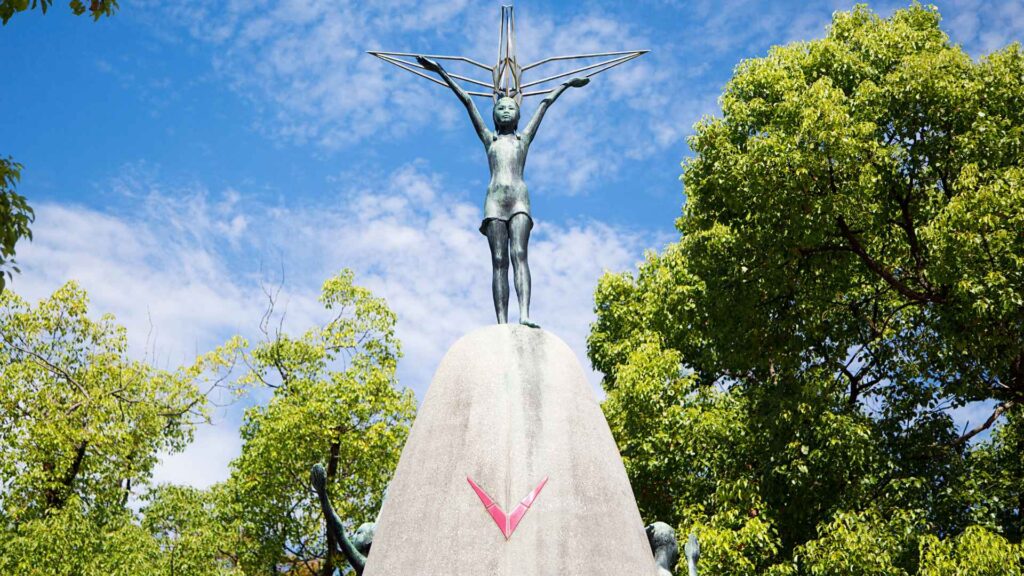
Must-See Attractions Near the Port
Hiroshima isn’t just a historical city—it’s a vibrant hub of modern activity, scenic landscapes, and cultural touchpoints.
Once you step off the cruise ship, a world of discovery awaits within easy reach.
Top Local Landmarks
- Hiroshima Peace Memorial Park: This tranquil area honors those affected by the atomic bomb. The park, museum, and surrounding monuments offer a contemplative experience with lush greenery.
- Atomic Bomb Dome (Genbaku Dome): A UNESCO World Heritage Site, it stands as a poignant symbol of peace, located just a short distance from the park.
- Hiroshima Castle: Also called the ‘Carp Castle,’ this structure is a modern reconstruction of the original feudal fortress. Explore the castle grounds and scenic moat.
Nature and Green Spaces
- Shukkeien Garden: A beautifully landscaped garden featuring miniature replicas of natural formations. Wander the winding paths to enjoy tea houses, koi ponds, and seasonal flowers.
- Hijiyama Park: Overlooking Hiroshima’s urban core, Hijiyama Park offers panoramic city views and is home to the Hiroshima City Museum of Contemporary Art.
Cultural Indulgences
- Hiroden Streetcar Ride: Enjoy an old-school tram experience while passing local shops, restaurants, and notable landmarks.
- Okonomimura Food Village: For a culinary fix, head to this multi-story haven dedicated to Hiroshima’s famous pancake-like dish, okonomiyaki.
Suggested Shore Excursions
- Half-Day City Tour: Combine the Peace Memorial Park with Hiroshima Castle for a compact yet culturally rich outing.
- Food Crawl: Sample Hiroshima-style okonomiyaki, fresh oysters, and sake from nearby breweries.
- Bike Rentals: Cycle through scenic routes or head towards the city’s outskirts to find hidden temples and shrines.
With these attractions conveniently located near the port, you can maximize every moment of your short shore visits. Each site serves as a testament to Hiroshima’s resilience, innovation, and hospitality, guaranteeing a memorable excursion for all.
Historic and Cultural Highlights
Hiroshima’s history is both profound and inspirational. The city has rebuilt itself into a place that values peace, culture, and human connection. These highlights offer immersive experiences that help you understand Hiroshima’s rich heritage while celebrating its vibrant present.
Peace Memorial Park and Museum
- Reflective Atmosphere: The carefully manicured grounds and symbolic statues create a space for remembrance and hope.
- Museum Insights: Learn about the events of August 6, 1945, through photographs, personal belongings, and interactive exhibits.
- Children’s Peace Monument: Dedicated to the young victims of the bomb, it’s adorned with colorful paper cranes sent from across the globe.
Temples and Shrines
- Mitaki Temple: Known for its serene waterfalls and lush foliage, this hidden gem provides a calming respite from the city’s hustle.
- Gokoku Shrine: Originally built to commemorate Hiroshima’s war dead, it’s located near Hiroshima Castle.
- Miyajima’s Itsukushima Shrine (Nearby Island): Famous for its ‘floating’ torii gate, Miyajima is about an hour away by ferry and well worth the trip.
Seasonal Cultural Events
- Hiroshima Flower Festival: Held in early May, the city comes alive with parades, concerts, and community gatherings.
- Toro Nagashi (Lantern Ceremony): On August 6, floating lanterns light up the Motoyasu River, honoring those who lost their lives in WWII.
Engaging with Local Traditions
- Tea Ceremonies: Immerse yourself in this centuries-old ritual at local teahouses or cultural centers.
- Kimono Experiences: Several shops rent kimonos or yukatas for a day, allowing you to stroll through gardens or shrines in traditional attire.
- Calligraphy Workshops: Learn brushstroke techniques and create meaningful souvenirs under the guidance of skilled instructors.
Each historic and cultural stop reveals a piece of Hiroshima’s identity. From commemorative monuments to time-honored traditions, you’ll gain a deeper appreciation for the city’s journey and the warmth of its people. These experiences enrich any cruise itinerary, leaving lasting impressions long after you set sail.
Dining Options and Local Flavors
Food in Hiroshima is a delicious blend of tradition and innovation. From sizzling grills to cozy cafés, the city offers culinary delights that cater to every palate. Sampling Hiroshima’s signature dishes is an essential part of any visit.
Local Specialties
- Okonomiyaki (Hiroshima Style): A savory pancake layered with cabbage, noodles, meat or seafood, and a special sauce. Unlike the Osaka version, Hiroshima okonomiyaki is prepared in layers rather than mixed.
- Oysters: Hiroshima is Japan’s top oyster producer. Enjoy them grilled, deep-fried, or even raw in specialized restaurants around the port.
- Momiji Manju: These maple-leaf-shaped pastries typically contain sweet red bean paste but come in modern fillings like chocolate or cream.
Restaurant Recommendations
- Okonomimura: This multi-floor ‘village’ of okonomiyaki stands is a must-visit, offering variations by different vendors in one lively setting.
- Local Izakayas: For an authentic night out, venture into small bars and pubs featuring yakitori, sashimi, and sake.
- Upscale Dining: Hiroshima’s culinary scene also caters to fine dining enthusiasts. Look for restaurants with panoramic views of the city or Seto Inland Sea.
Food Etiquette Tips
- Chopstick Use: Never stick your chopsticks upright in your rice, as it’s associated with funeral rites.
- Sharing Plates: Izakayas often serve shared portions, so feel free to split dishes among friends.
- Tipping: Not customary in Japan. High-quality service is standard, so a simple ‘thank you’ in Japanese (“arigato gozaimasu”) is sufficient.
Flavorful Beyond the City
- Island Specialties: Nearby islands like Miyajima also boast unique local fare, such as anago meshi (grilled conger eel over rice).
- Farm-to-Table Spots: Explore countryside cafés for fresh produce, especially if you have time for a short day trip.
Tasting Hiroshima’s diverse cuisine is more than just filling up—it’s an enriching peek into the region’s soul.
By indulging in local dishes, you support family-owned restaurants and honor centuries of culinary tradition, ensuring a memorable, flavor-packed journey.
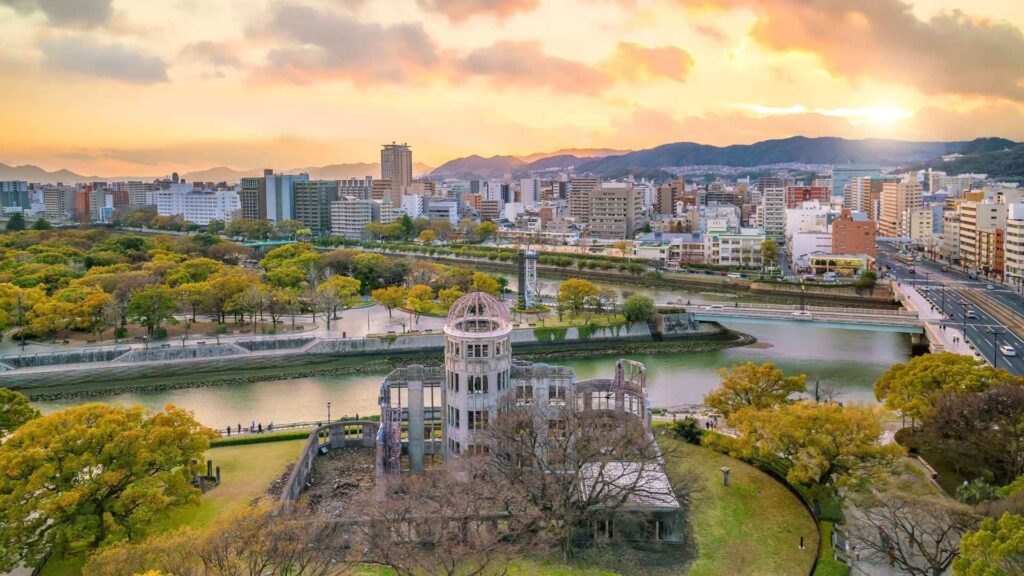
Retail and Souvenir Shopping
Finding the perfect souvenir or gift is all part of the travel experience, and Hiroshima offers plenty of shopping spots that cater to different tastes and budgets.
From traditional crafts to modern malls, the city has something for everyone.
Popular Shopping Areas
- Hondori Shopping Arcade: A lively, covered street lined with boutiques, cosmetic stores, and cafés. Ideal for a casual stroll while hunting for bargains.
- Sunmall and Shareo Underground Mall: Conveniently located in central Hiroshima, these malls offer a wide range of fashion brands, accessories, and snack shops.
- JR Hiroshima Station Complex: If you’re short on time, the station’s shopping complex provides everything from souvenirs to high-end Japanese sweets.
Traditional Crafts and Local Products
- Kendama: A Japanese skill toy that originated in Hiroshima, featuring a wooden ball attached by a string to a spike. Look for decorative, handcrafted versions.
- Sake: The region is known for quality brews. Many specialty shops offer taste tests so you can find a favorite bottle to take home.
- Bizen Pottery: Though originally from nearby Okayama Prefecture, you can find these rustic, unglazed ceramics in select Hiroshima shops.
Souvenir Ideas
- Momiji Manju: Packaged individually or in gift boxes, these sweets make lovely edible souvenirs.
- Limited-Edition KitKats: Japan is famous for unique KitKat flavors. Hiroshima often carries region-specific tastes like Momiji Manju or matcha.
- Local Artwork: Check out galleries for prints of iconic Hiroshima scenes or calligraphy pieces crafted by local artists.
Tips for Shoppers
- Cash vs. Card: Most larger stores accept credit cards, but smaller family-run shops prefer cash.
- Tax-Free Shopping: Some stores offer tax-free options for visitors. Bring your passport and look for the “Tax-Free” sign.
- Business Hours: Shops usually open from late morning until 8 or 9 PM. Traditional markets may close earlier.
By exploring Hiroshima’s retail landscape, you’ll gain insight into local life and perhaps discover one-of-a-kind treasures. Whether you’re after clothing, crafts, or culinary treats, you’ll leave with a tangible memory of this dynamic city.
Outdoor Adventures and Side Trips
Beyond city streets, Hiroshima’s surrounding areas showcase pristine landscapes and thrilling activities. Outdoor enthusiasts and nature lovers will find plenty of ways to escape the urban bustle and recharge in serene settings.
Island-Hopping in the Seto Inland Sea
- Miyajima Island: Famous for Itsukushima Shrine’s “floating” torii gate, scenic hiking trails, and friendly wild deer.
- Etajima Island: Less crowded than Miyajima, offering quiet beaches, cycling routes, and a naval academy museum.
- Okunoshima (Rabbit Island): A day trip to this quirky island populated by friendly rabbits is fun for families and animal lovers.
Hiking and Nature Walks
- Mt. Misen (Miyajima): A moderate hike leads to breathtaking vistas of the sea and surrounding islands.
- Mt. Futaba: Overlooking Hiroshima city, the trail offers a panoramic view of skyscrapers blending with lush greenery.
- Parks and Gardens: Shukkeien and Hijiyama Park aren’t just for strolling—both offer scenic walking paths that immerse you in local flora.
Cycling Adventures
- Shimanami Kaido: Though it starts in Onomichi (about an hour from Hiroshima), this 70-kilometer route across multiple islands is legendary among cycling enthusiasts. Rent a bike and tackle as much or as little as you like.
- Waterfront Cycle Paths: The city’s riversides and coastline feature well-maintained paths for relaxed riding.
Guided Tours and Hidden Gems
- Kayaking in Miyajima: Some tour operators offer kayak trips around the iconic torii gate, providing a unique perspective on this historic site.
- Locally Led Excursions: Join small-group tours to discover lesser-known temples, scenic cliffs, or fishing villages.
- Seasonal Blooms: If you visit in spring, don’t miss the cherry blossom spectacles around Hiroshima Castle and Peace Memorial Park.
Whether you’re seeking adrenaline-pumping adventures or tranquil afternoons in nature, Hiroshima’s surroundings deliver. These side trips let you break away from typical tourist routes and form a deeper connection with Japan’s enchanting landscapes.
Essential Travel Tips and Port Info
A bit of planning goes a long way when visiting Hiroshima Cruise Port. Arm yourself with these essential tips to make the most of your time and ensure a hassle-free journey.
Currency and Payments
- Japanese Yen: While credit cards are accepted at many places, small eateries and souvenir shops often require cash.
- ATMs: Look for ATMs in convenience stores like 7-Eleven, which usually accept foreign cards.
- Currency Exchange: On-site counters at the port or Hiroshima Station offer competitive rates, though you might find better deals at major banks.
Communication and Connectivity
- Wi-Fi Hotspots: Most major tourist sites, shopping centers, and the cruise terminal offer free Wi-Fi.
- SIM Cards and Pocket Wi-Fi: If you need consistent data, purchase a SIM card at the airport or rent a portable Wi-Fi device.
- English Signage: Hiroshima is visitor-friendly, with English information in stations and tourist areas.
Time-Saving Strategies
- Early Start: Arrive early to major attractions like the Peace Memorial Museum to avoid long lines.
- Day Passes: If you plan to use trams extensively, consider buying a day pass for unlimited rides.
- Onboard Booking: Some cruise lines allow you to reserve tours and experiences before you land, saving time.
Staying Organized
- Cruise Ship Schedules: Be mindful of departure times. Local transport is generally punctual, so you can plan with confidence.
- Luggage Solutions: Make use of coin lockers at stations if you’re heading out for the day with large bags.
- Check Weather Forecasts: Hiroshima has humid summers and cool winters, so pack accordingly.
At the Port
- Arrival and Departure Lounges: Arrive a bit earlier than scheduled to pass through security smoothly.
- Transportation Links: Use the port’s clearly marked taxi stands or bus stops to get around promptly.
- Tourist Information Booths: Helpful staff can direct you to last-minute tours, local events, or hidden gems you might have missed in your research.
With these tips in hand, you’ll find Hiroshima easy to navigate. By prepping the essentials—currency, connectivity, and a loose itinerary—you’ll waste no time diving into the city’s sights, sounds, and tastes.
Safety, Etiquette, and Local Customs
Hiroshima welcomes visitors with open arms, but understanding a few cultural norms and local practices will enhance your stay. These pointers ensure you remain respectful while staying safe.
General Etiquette
- Quiet in Public Spaces: Japanese culture values a calm ambiance. Speak softly on trains and avoid making loud noises.
- Queueing: Whether boarding a bus or entering an elevator, waiting in line is standard. Cutting ahead is considered rude.
- Greetings: A slight bow often replaces handshakes. If someone bows to you, return the gesture.
Shrines and Temples
- Purification Rituals: At many shrines, visitors rinse their hands and mouth at a chozuya (purification fountain) before entering.
- No Photos in Sacred Areas: Some temples or shrines prohibit photography in certain sections. Look for posted signs.
- Appropriate Dress: While formal attire isn’t necessary, dressing modestly is appreciated.
Staying Safe
- Emergency Numbers: Dial 110 for police and 119 for fire or ambulance.
- Natural Disasters: Japan experiences occasional earthquakes or typhoons. Follow local news and heed instructions from authorities.
- Personal Belongings: Hiroshima is generally safe, but keep an eye on your valuables, especially in crowded areas.
Cultural Sensitivities
- Atomic Bomb Memorials: Remember that the Peace Memorial Park and museum are solemn places. Show respect by keeping voices low and refraining from disruptive behavior.
- Photography of Locals: Ask permission before taking close-up photos of strangers, especially children.
- Gift-Giving Customs: Small gifts or souvenirs are often exchanged in Japan. Offering a token from your home country is a thoughtful gesture.
Environmental Awareness
- Waste Separation: Japan has strict recycling rules. Look for labeled bins to dispose of items correctly.
- No Littering: Keep the city clean by holding onto trash until you find a proper bin.
By following these guidelines, you’ll naturally blend into Hiroshima’s culture. Show courtesy to your hosts, respect local traditions, and stay prepared for any eventuality. Your experience will be all the richer for it.
